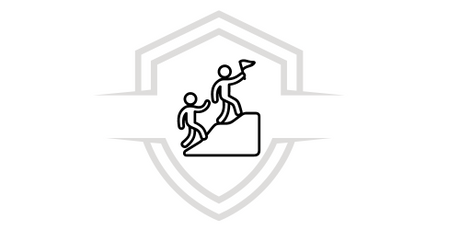Communication is a fundamental process for relating to other people. Depending on the way we communicate, we will achieve better or worse results in our personal or professional lives.
In this article we will develop the different types of assertive communication, so that you can develop this type of communication and improve your experiences.
What is assertiveness?
The main objective of assertive communication is to take care of what is going to be said and how it is going to be said. To express ourselves it is not enough to be sincere and timely, we must also communicate in the best possible way, and this includes respect and empathy for the other.
Therefore, when we talk about assertiveness, we are referring to the correct way of getting the right message across to the recipient without making them feel threatened or insulted.
What this means is that assertive communication seeks to ensure that the experience is clear, that both parties understand each other, and that this process is free of interference.
What are the characteristics of assertive communication?
If a communication is assertive it will have the following characteristics that have to do with psychological, emotional and pragmatic aspects of the communicative act.
These are the characteristics of assertive communication:
Body posture
The body position when communicating should be relaxed, to generate confidence and convey interest and sincerity. Here, establishing eye contact with the other person is key.
The gestures
Gestures during communication should play in favor of the message, reinforce what is said, or else they can distract the listener.
The joint
The way words are pronounced, the intonation and the rhythm of the conversation interfere with communication. And a confusing message, where the words are not understood, will only discourage the other person and make them not want to continue the conversation.
Reciprocity
Communication is an act that takes place between two or more people, therefore, there must be reciprocity to respect each other's time, we must take care of the time we spend speaking or listening, respect each other's turns, pay attention to what is said, etc.
Location
We must choose the place to talk appropriately; it must be in a safe and peaceful place. The location is a factor that can make or not make our conversation more assertive and comprehensive than if we were in a difficult place, full of distractions or threats.
Knowledge of the subject
If we want to be able to express ourselves correctly, it is not enough to have the intention to do so, it is also about knowing the topic of conversation, and if on the contrary, the subject is not well understood, then we should say so or specify when we have mastery of the subject.
20% EXTRA DISCOUNT
Start today and get fully certified in Assertive Communication with our course
- 100% online at your own pace
- Practical exercises
- Lifetime Access
- Certified endorsed
Apply the coupon [DARE] and get an extra 20% discount for only 100 students. Click the button and join!
Types of assertive communication
Now, let's break down 3 types of assertive communication:
Verbal: Verbal communication refers to what is said, it depends on the choice of words, sentence construction and linguistic specifications.
Non-verbal. Non-verbal communication has to do with what is not said, gestures, body posture or even the place chosen for a conversation.
Paraverbal: Paraverbal communication is somewhere between verbal and nonverbal, that is, it encompasses the elements that accompany the formulation of the message, for example: how things are said, the tone of voice, the way of articulating, the rhythm, etc.
Techniques to develop assertiveness
If you want to work on assertive communication so that it is the basis of all your relationships, you can put into practice these techniques that will help you improve both personally and professionally.
Repetition.
It consists of repeating the same tone and cadence to improve a message that was not ideally received, for example, how to best communicate: “No, I do not need that product.”
Without discussion.
The idea is to avoid arguments or provocations just by agreeing with someone, but in the opposite way, so as not to fall into confrontations: For example: “You may be right.”
Assertive question.
If instead of reproaching, the situation is improved with an assertive question, this question is used to improve the situation or obtain the desired result. “How can I support you to finish the work?”
Floating voltage.
If something in a conversation makes us uncomfortable or upsets us, instead of seeking confrontation, we ignore the message and pay attention to the rest.
Speak from the self. It is always better to speak from the subjective perspective, and not to place the blame or responsibility on the other person. It is better to say “I don’t think it’s right” than to say “You’re doing it wrong.”
After reading our article, we hope you have a better understanding of what affective communication is, the types of affective communication, and some techniques to develop this ability.
Now we'll give you some final tips and recommendations.
FREE DOWNLOAD
Learn about the most effective techniques to generate positive emotions and discover your strengths and virtues. Download this guide completely FREE.
Final Tips and Recommendations
Assertive communication, unlike what some people may think, is a sign of weakness and lack of initiative. It is actually the ability to take a firm stance without imposing or falling into provocations. This will help you express yourself better in both personal and professional settings.
In addition to trying not to get into confrontations, assertiveness will facilitate communication in all aspects, because we do not need to impose ourselves to express our ideas or position on any topic.
Assertive communication covers both what is said and what is not said. Therefore, we must take care of every aspect of communication to achieve the goal of being understood effectively by others.
Courses that may interest you
Do you want to acquire more skills to improve Assertive Communication? We recommend our courses on Wellbeing and Positive Psychology, Time Management and Productivity, and Effective Communication.















